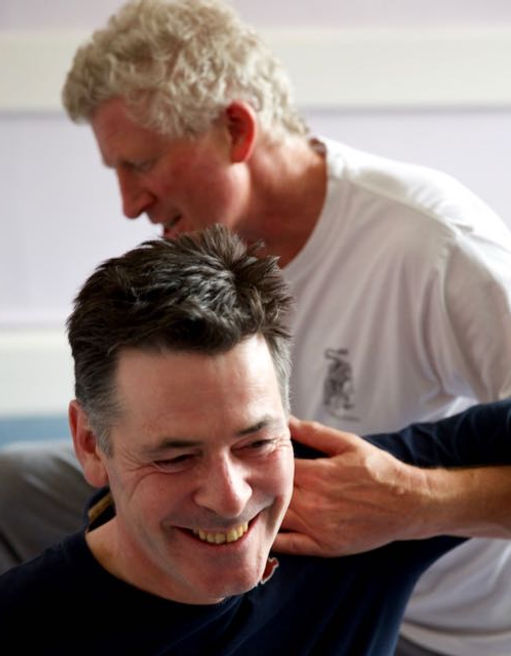
Kim Lovelace - Shiatsu & Qigong
ShiatsuKim@gmail.co.uk
07989 598 375
What is Shiatsu?
Hopefully, having arrived at this site, you already know something about shiatsu. Here are a few words and images that may deepen your knowledge.
Shiatsu is communication through touch. Everybody responds to touch. It helps us discover where our body begins and ends, feels safe to move, where it resists and most importantly where it would like to change.
Shiatsu helps create space. In our body, between tissues, between the articulating surfaces of joints, in our body cavities. It helps create space in our life, allowing time to notice those magical moments of stillness that create opportunities for change.


Shiatsu is a form of bodywork that uses pressure, stretches and joint mobilization to effect changes in the body. Shiatsu is not manipulative, it enables the body to articulate.
It is impossible to work on the physical body without affecting the non-physical. Shiatsu is a therapy that addresses all aspects of our being: physical, mental, emotional and spiritual.
The word Shiatsu means “finger pressure” in Japanese. It is a hands-on therapy originating in Japan. Like many things Japanese, shiatsu draws on techniques and ideas from other cultures, most notably China. The thumbs, palms, fingers, elbows and knees are used to apply deep, yet relaxed pressure to areas of the body. Correct pressure results in expansion and release.

Shiatsu has its origins in Japanese Traditional Medicine and its action and effects are described in terms of Ki.
What is Ki?
Ki, the Japanese for 'Chi' or 'Qi', is beyond conventional definition. In the West, Ki is often equated with energy.
A dictionary definition is:
The circulating life force whose existence and properties are the basis of much Chinese philosophy and medicine.
There are many similarities with our perception of energy. Traditionally Ki manifests as Movement, Warmth, Protection, Support and Transformation.
In East Asian cultures, Ki is so much a part of life it requires no explanation. A good party in Japan might be described as "Full of Ki".
The manifestation of Ki does not have to be purely physical. A new thought or way around a problem is a sign of Ki flowing and transforming rather than being stuck.
